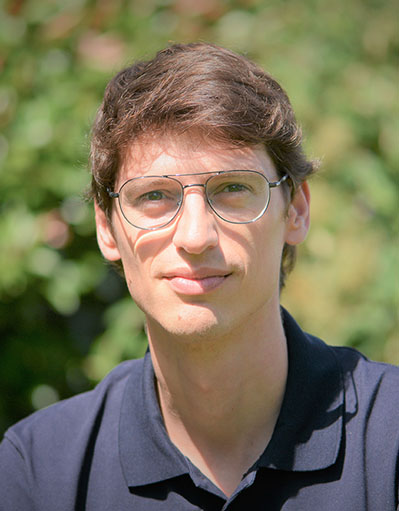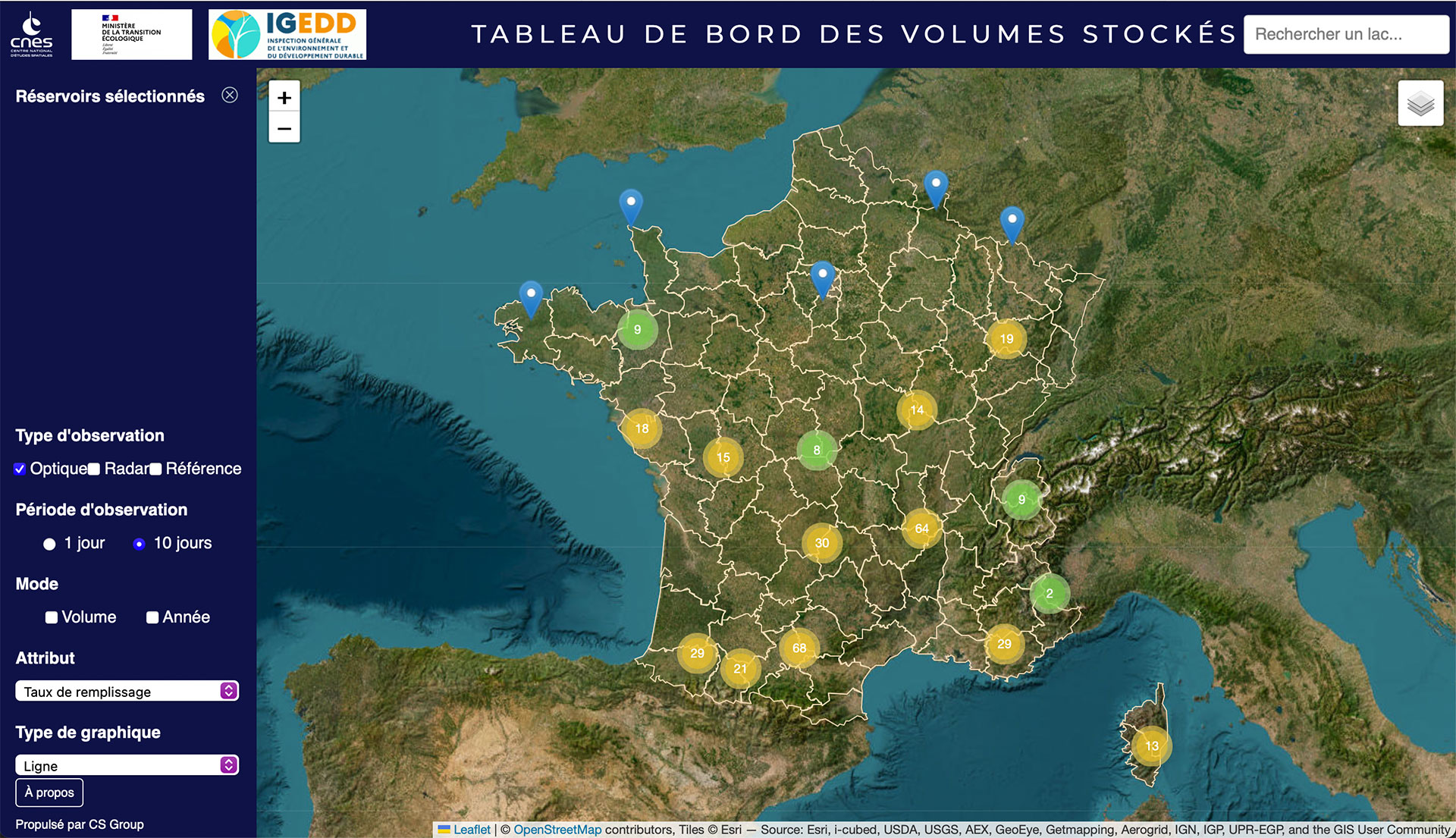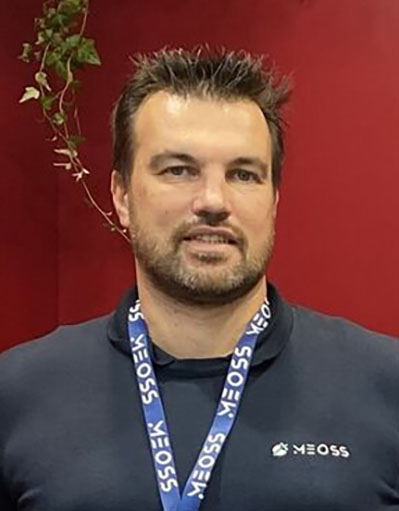SCO France at the forefront of the future national hydrological service
In May 2023, we invited the SCO community to take part in the "Use of spatial data for water monitoring and management" call for tenders launched as part of the France 2030 plan. Aimed at implementing a quantitative and qualitative water monitoring service throughout France, the call for tenders was divided into 4 lots, which were won by 9 entities grouped into 6 consortia.
👉Lots 1 and 3 are directly derived from three projects brought to the operational stage thanks to the SCO framework. SCO France is thus proving its role as a lever for developing an ecosystem of climate and environmental services, by providing the government with a more legible offering of possible services and their potential.
👉5 of the 9 companies selected to implement these services are or have been directly involved in SCO projects: CS Group, MEOSS, Magellium, Terranis et Vortex.io. For the private sector, and start-ups in particular, the SCO France offers an incubation and maturation framework for acquiring skills, working alongside the academic world. When the time comes to go to scale, as proposed in the France 2030 calls for tenders, this anchoring in science supports their credibility and their ability to conduct a real demonstration of services.
See the details in the last paragraph SCO France in the DNA of each batch.
Success story 1: MEOSS
|
Thomas Ferrero then goes on to describe the way in which he organized himself to respond in a comprehensive manner, with relevant partnerships. "For lot 1, we chose to form a consortium with Thales, with whom we had already worked, firstly to bring the Sentinel-2 satellite data that feeds our water surface monitoring algorithm up to very high resolution, and secondly to provide the cloud computing architecture needed to handle the large volume of data to be processed. For work package 3, we have asked Terranis to join us in processing the 'vegetation cover' part, in which they are specialists, so that we can concentrate on our expertise in monitoring irrigated plots. In this respect, we have also received support from CESBIO to develop new indicators that are more research-based than operational". |
The domino effect |
Success story 2: Stock Water
While the SCO is an ideal framework for private-sector players wishing to gain in maturity and/or influence, it is just as valuable for public-sector institutes that have the skills to develop innovative technological building blocks but do not have the operator status to exploit them.
This is the adventure of Santiago Pena Luque, a space hydrology specialist at CNES and leader of the Stock Water project, designed to use satellite data to estimate the volume of water stored in a dam and its rate of filling:
|

Santiago Pena Luque © CNES |
"By 2021, our prototypes and algorithms, initially developed to monitor dams in the Occitanie region, had proved sufficiently robust to move on to the next stage with the SCO. Thanks to SCO, we were able to transfer the processing chain to the private sector, in this case CS Group, to industrialize it, but also to consolidate it with foreign laboratories and institutions (India, Burkina Faso, Brazil), prepare the indicators required by our anchor customers, and finally design a web portal to visualize our results. Based on the Stock Water demonstrator produced within the SCO framework, we were quickly able to produce a national equivalent proving the reliability of the system for an operational service as required by France 2030. Another of the SCO's great strengths is its dynamic communication, which enables exchanges with numerous communities - scientific, institutional, diplomatic, etc. - and promotes French know-how. - It's a great way of promoting French expertise". |
SCO France in the DNA of each batch
Batch 1 - Monitoring the volumes of water stored in dam reservoirs and monitoring the dynamics of water bodies.
CS GROUP and the THALES SN/MEOSS consortium have been selected to provide the service.
👉This service combines the efficiency of:
- the dem4water algorithm, developed by CNES and industrialized with CS Group as part of the SCO Stock Water project, to estimate in real time the volume of water stored in a dam and its filling rate;
- the display interface, also developed as part of Stock Water.
- the WaterReserve tool, developed by MEOSS as part of the SCO MEO-Climate project, to assess water surfaces.
|
|
Already up and running, the service is freely accessible and monitors 310 reservoirs in France on a daily basis - soon to be 5,000: https://www.france-suivi-satellitaire-des-retenues.org/ |
|
Batch 2: Monitoring water quality in lakes and rivers.
The MAGELLIUM/VORTEX-IO consortium has been selected to provide the service.
👉 While the tools are not derived from SCO projects, the two companies selected are active players in the SCO community. In fact, Magellium participates in the consortia of the SCO Mangroves, OpHySE and XtremQuality projects, while the innovative hydrological microstations designed by Vortex.io are deployed and used as part of the FloodDAM project and its Digital Twin component.
Batch 3: Monitoring irrigated agricultural plots, monitoring the density of intercropping plant cover for water protection purposes.
The KERMAP/IGN-FI and MEOSS/TERRANIS/THALES SN consortia have been selected to provide the service.
👉The monitoring of irrigated agricultural plots is based on the excellent work carried out by MEOSS in collaboration with CESBIO via the SCO Space4Irrig project. Terranis, a partner in the SCO Eagle Hedges and Green Urban Sat projects, is involved in this work package because of its expertise in satellite monitoring of vegetation cover.
Lot 4: Portal for viewing and using the data and information produced by the first three services, to support the implementation of various public policies.
The VORTEX-IO/NUMERISK consortium has been chosen to develop this service.
👉As mentioned in lot 2, Vortex.io is a key player in the FloodDAM project and its Digital Twin trand.




